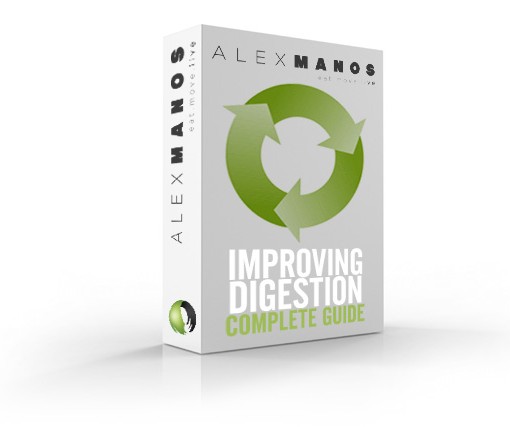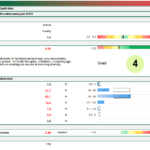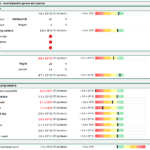Probiotics For Liver Health
You may also be interested in the section of my blog dedicated to gut health, click here, and liver health, click here, in particular:
- The Gut-Liver Axis: click here.
In the above article I introduced the gut-liver axis and how the gut microbiome and leaky gut can cause liver disease.
What’s The Best Probiotic For Fatty Liver?
Most recently, Gao and collaborators evaluated the efficacy of probiotic treatment in both pediatric and adult NAFLD including nine RCT with a total of 535 NAFLD cases. They showed that probiotics improve the clinical outcomes of NAFLD patients, influencing insulin sensitivity and reducing TNF-α.
It has been demonstrated that VSL#3, the most studied multistrains probiotic, protects intestinal barrier integrity, dampens endotoxemia and oxidative/nitrosative stress thus favoring improvement in liver pathology in patients with different chronic liver diseases, among which 20 with ALD and 22 with NAFLD.
In a double-blind RCT, in which were enrolled 48 pediatric NAFLD, 4 months VSL#3 supplementation improves severity of NAFLD as a consequence of VSL#3-induced eubiosis. Administration of Bifidobacterium longum along with the prebiotic fructo-oligosaccharides (FOS) strongly improved circulating metabolic and inflammatory markers and fibrosis scores in patients with biopsy-proven NASH.
What’s the best probiotic: I don’t think there is one probiotic that’s the best, but ones which have been studied with promising results include:
- VSL#3
- Jarrow Formulas Bifidus Balance and FOS (contains Bifido Longum and FOS)
- Optibac For Every Day (contains Bifido Longum)
- Biokult Multi Strain (contains Bifido Longum
- Culturelle (contains Lactobacillus rhamnosus GG – see below)
There are many others that could be considered also based on studies indicating the efficacy of other broad spectrum probiotics.
Can Probiotics Lower Liver Enzymes?
A significant improvement in levels of ALT was observed in probiotic group in comparison to placebo at 1 year.
Yes! In one double-blind study on 20 obese children with ultra-sonographic proved steatosis that were randomised for Lactobacillus rhamnosus GG or placebo for 8 weeks. Despite probiotic administration had no effect on adiposity and fatty liver, it has been suggested as treatment for hypertransaminasemia in obese children noncompliant to lifestyle interventions. Similar findings of reduced ALT and aspartate aminotransferases (AST) have been observed in 30 adults affected by NASH exposed to Lactobacillus acidophilus compared to those receiving placebo
Is It Safe To Take A Probiotic Every Day For Liver Health?
Daily supplementation of a probiotic is the typical frequency in the studies investigating the health benefits of probiotics. The duration varies considerably, and in the studies discussed the longest time frame was one year.
Do Probiotics Cause Liver Damage?
To my knowledge there is no evidence that probiotics cause liver dmage and all the research I have read has either shown benefit or no benefit, but never damage.
Can A Stool Test Detect Liver Disease?
No it can not. However based on the research I would argue we can make some speculations, and certainly gain an understanding of how the gut, and gut microbiome, may have contributed to the liver disease.
The main bacterial composition changes observed in NAFLD patients are represented by an enrichment in Proteobacteria, Enterobacteriaceae, Lachnospiraceae, Escherichia and Bacteroidetes.
So we do see some typical changes to the microbiome in those with NAFLD.
We also understand that leaky gut is a key factor in how these changes may cause liver disease.
We can therefore either test for leaky gut directly, or, consider evaluating a stool test with this in mind. Things in a stool test which might increase our suspicions of leaky gut include:
- Low microbiome diversity.
- Low levels of butyrate production bacteria such as Fecalibacteriam.
- Low levels of Akkermansia.
- Low secretory IgA.
- Elevated calprotectin.
- Elevated zonulin.
- Elevated levels of proteobacteria.
At healthpath our stool test evaluates all of these things, and more. A sample of the Healthpath stool report is below:
So Can Probiotics Help The Liver?
Yes, probiotics containing Lactobacillus or Bifidobacterium have demonstrated some promising effects such as:
- Attenuation of liver fat accumulation
- Reduction of insulin resistance
- Limitation of oxidative and inflammatory liver damage
- Decrease in blood lipids
Small human studies showed a beneficial effect of probiotics on liver damage, along with a decrease in certain liver enzyme levels, and a reduction in total cholesterol and low-density lipoprotein cholesterol (LDL-C) concentrations.
References
- Gut–Liver Axis: How Do Gut Bacteria Influence the Liver?: click here
- The gut-liver axis and the intersection with the microbiome: click here.
- The microbiome and autoimmunity: a paradigm from the gut-liver axis: click here.
- The gut microbiome and liver cancer: mechanisms and clinical translation: click here.
- Liver Steatosis, Gut-Liver Axis, Microbiome and Environmental Factors. A Never-Ending Bidirectional Cross-Talk: click here.
- Gut-Liver Axis, Gut Microbiota, and Its Modulation in the Management of Liver Diseases: A Review of the Literature: click here.
- The links between the gut microbiome and non-alcoholic fatty liver disease (NAFLD): click here.
- Targeting the gut-liver axis in liver disease: click here
- Microbiota, cirrhosis, and the emerging oral-gut-liver axis: click here.
- The gut-liver axis in liver disease: Pathophysiological basis for therapy: click here.
- Bilirubin in the Liver-Gut Signaling Axis: click here.
- Gut Microbiota and Complications of Liver Disease: click here.
- Role of Gut Microbiota in Neuroendocrine Regulation of Carbohydrate and Lipid Metabolism via the Microbiota-Gut-Brain-Liver Axis: click here.
- Gut microbiota and host metabolism in liver cirrhosis: click here.
- Gut microbiota: novel therapeutic target for nonalcoholic fatty liver disease: click here.
- The role of the gut microbiota in NAFLD: click here.
- Gut-liver axis, nutrition, and non-alcoholic fatty liver disease: click here.
- Gut microbiota in non-alcoholic fatty liver disease and alcohol-related liver disease: Current concepts and perspectives: click here.
- The Molecular and Mechanistic Insights Based on Gut-Liver Axis: Nutritional Target for Non-Alcoholic Fatty Liver Disease (NAFLD) Improvement: click here.
- Leaky Gut As a Danger Signal for Autoimmune Diseases: click here.
- Gut microbiome, liver immunology, and liver diseases: click here.
- High potency multistrain probiotic improves liver histology in non-alcoholic fatty liver disease (NAFLD): a randomised, double-blind, proof of concept study: click here.
Alex is a certified Functional Medicine Practitioner (IFMCP) and has a MSc in Personalised Nutrition. He is also a breathwork facilitator with a background in personal training and massage therapy. He also runs The Resiliency Program - a 24 week program aimed at building physical, mental, emotional, and spiritual resilience.





